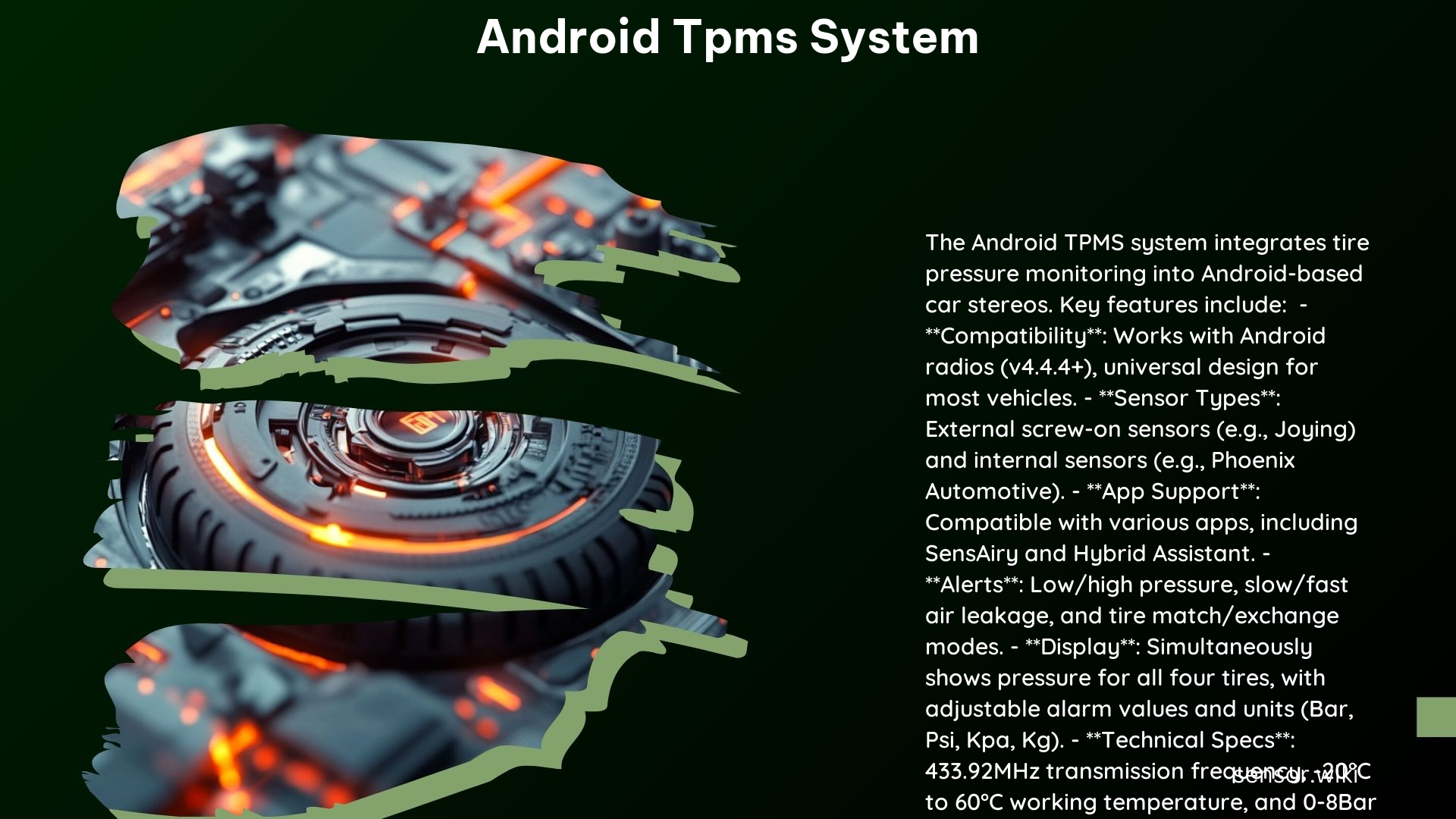The Android TPMS (Tire Pressure Monitoring System) is a cutting-edge technology designed to provide drivers with real-time tire pressure data on their Android-based car navigation systems. This comprehensive guide delves into the intricate workings of the Android TPMS, its technical specifications, and the advanced features that make it a must-have for modern vehicle owners.
Decoding and Displaying Tire Pressure Data

At the heart of the Android TPMS system is its ability to decode and display tire pressure data. The system utilizes Bluetooth-enabled sensors that transmit this critical information to the Android head unit, allowing drivers to monitor the pressure in each tire with unparalleled precision.
The decoding process is a complex yet efficient operation, with the Android TPMS system seamlessly translating the sensor data into a user-friendly format. This information is then displayed on the head unit, providing the driver with real-time updates on the tire pressure status. The data includes individual pressure readings for each tire, empowering the driver to maintain optimal tire pressure and ensure the safety and performance of their vehicle.
Reading and Reprogramming TPMS Sensors

The Android TPMS system is designed to be highly versatile, capable of reading data from TPMS sensors operating at various frequencies, including the commonly used 433MHz and 315MHz. This flexibility allows the system to be compatible with a wide range of vehicle models and sensor types.
Furthermore, some Android TPMS systems offer the ability to reprogram TPMS sensors, particularly those with internal sensors that need to be matched to the specific vehicle. This feature is invaluable for situations where the sensors require replacement or when the driver needs to recalibrate the system to accommodate changes in the vehicle’s tire configuration.
Speed-Dependent Data Display
The Android TPMS system is designed with driver safety in mind, and this is reflected in its speed-dependent data display feature. The system typically only shows the tire pressure data after the vehicle has reached a certain speed, usually around 20mph. This is a deliberate design choice to ensure that the driver is not distracted by the data while the vehicle is stationary or moving at low speeds, where their attention should be focused on the immediate driving environment.
Technical Specifications
Compatibility
The Android TPMS system is compatible with Android radios that have a USB port and are running Android version 4.4.4 or higher. This ensures that the system can be seamlessly integrated into a wide range of modern Android-based car navigation systems.
Sensor Types
The Android TPMS system supports two main types of TPMS sensors: external sensors that screw onto the valve stem and internal sensors that are installed directly inside the tire. This versatility allows the system to be adapted to various vehicle configurations and sensor preferences.
Frequency
The TPMS receiver in the Android system operates at a frequency of 433.92MHz, which is a widely used frequency for TPMS applications. This ensures compatibility with a broad range of TPMS sensors available in the market.
Power
The Android TPMS system requires a power supply of DC 5V, making it compatible with the electrical systems of most modern vehicles.
Temperature Range
The system is designed to operate in a wide range of temperatures, from -20°C to 60°C, ensuring reliable performance in diverse climatic conditions.
Advanced Features
Alarm Functions
The Android TPMS system incorporates advanced alarm functions to enhance driver safety and awareness. These include alerts for low and high tire pressure, as well as slow and fast air leakage. Additionally, the system offers a tire match mode, which allows for the easy rematching of sensors to the vehicle’s tires.
Language Support
The Android TPMS system supports multiple languages, including English, Simplified Chinese, and Traditional Chinese, making it accessible to a global user base.
Conclusion
The Android TPMS system is a remarkable technological advancement that empowers drivers to monitor and maintain the health of their vehicle’s tires with unprecedented precision. With its advanced features, technical specifications, and seamless integration with Android-based car navigation systems, the Android TPMS system is a must-have for modern vehicle owners who prioritize safety, performance, and convenience.
